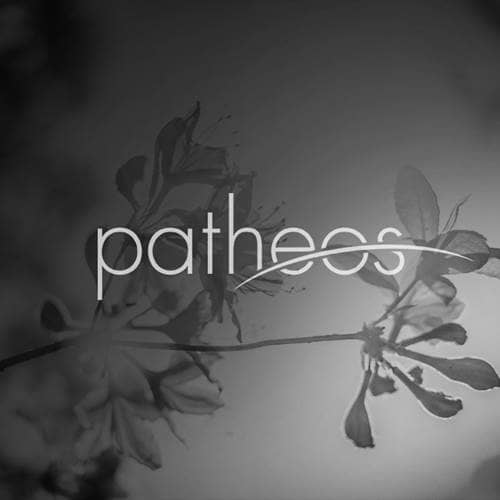- Trending:
- Pope Francis
- |
- Resurrection
- |
- Trump
- |
- Social Justice
- |
- Peace
- |
- Love

RELIGION LIBRARY
Presbyterian and Reformed
Symbolism
Because Zwingli made every effort to model worship on the practices of the early Church as found in the Bible, he (and Calvin following him) was in some ways a more radical reformer than Luther. Whereas Luther permitted traditional practices to continue unless proscribed by scripture, Zwingli tried to abolish any practice not prescribed by scripture. The result for symbolism in Reformed churches has been significant.
Reformed Churches are far more likely than Lutheran churches (or Anglican, or certainly Catholic) to be stripped bare. There are few images or statues. Typically Reformed sanctuaries have a cross without the body of Jesus on it, symbolizing the resurrection, rather than a crucifix with the body of Jesus, symbolizing Christ's passion. The walls are usually white, and if there are decorations they tend to be simple geometrical patterns.
Luther did not discontinue the wearing of vestments by clergy. In fact he often wore his monk's robes to worship. In Calvin's Geneva clergy adopted the practice of wearing black robes rather than vestments. These robes were associated with university professors, a "secular" calling, rather than with Roman priests. Marie Dentière, who was a French woman and proponent of the Reformation, once criticized Calvin for wearing these robes, pointing out that if he took the priesthood of all believers with complete seriousness he would adopt more common street clothes for preaching.
There are for Reformed churches, as for others, colors associated with each liturgical season. The communion table and pulpit will often be dressed in violet for Advent, Lent, and the first three days of Holy Week. White is used for Christmas Eve and Christmastide, Epiphany, Maundy Thursday, Eastertide, and Trinity Sunday. Red is used for Good Friday and Pentecost. Green is used for the Sundays after Pentecost.
The iconoclastic tradition of Reformed and Presbyterian Christianity led to a longstanding distrust of symbols. For many centuries, Presbyterians seemed to believe that any reliance on symbolism to manifest or display or teach Christian truth subtracted from the authority they accorded to scripture alone. Meeting houses were very simple. This dependence on words and the belief that such dependence was a zero sum game that allowed for no symbolism was strengthened by revivals in the 18th and 19th centuries, which relied almost exclusively on the words of the Bible and of the preacher. Many Presbyterians believed, well into the 19th century, that music had no place in worship. Horace Bushnell (1802-1876), a Congregational minister, made the case in the 19th century that Reformed Christians ought not forget that words, too, had symbolic meaning. Despite his stature as one of the most prominent American theologians of the 19th century, his admonitions were largely ignored.
Not until the late 19th and early 20th centuries did Presbyterian and Reformed Christians begin to soften their stance against symbols. Southern Presbyterians in Presbyterian Church in the U.S. commissioned a seal for their denomination in 1891. Though it was widely used, distrust of symbols prevented its formal adoption as the seal of the denomination until 1956. Northern Presbyterians also created a seal, adopting it at the 1892 General Assembly. While this willingness to create seals indicates a lessening of iconoclastic distrust, the seals themselves are extremely literalistic. They basically consist of pictures of the Bible. Not until 1959 does a Presbyterian denomination in the United States (the Presbyterian Church [U.S.A.]) adopt a seal that depicts a cross. To depict a cross had seemed to Reformed Christians, since Zwingli's reform of Zurich in the 1520s, to smack of Catholicism and Roman Catholic reliance on imagery.
The official seal of the Presbyterian Church (U.S.A.), adopted in 1985, is at first glance simply a cross. It is intended to capture some of the important emphases of the Reformed tradition. The cross is made up of a dove, representing the Holy Spirit, as well as a Bible sitting open on a lectern, indicating the Reformed principle of sola scriptura, and the importance of preaching and learning in the Reformed tradition. The flames at the base of the cross indicate a triangle, representing the Trinity. The flames symbolize both the burning bush from which God spoke to Moses, and the outpouring of the Spirit at Pentecost that founded the Church. Today's Presbyterian churches are increasingly making use of symbols and a high aesthetic that contribute to the liturgical space and rich experience of worship.
Study Questions:
1. In what ways could Zwingli’s efforts, despite his theology, classify him as more radical than Luther?
2. Describe the symbolism used within Reformed Churches. Why are they typically bare?
3. How is color used as a medium of symbolism?
4. When did Presbyterian and Reformed churches begin to accept symbols? What was the result?
5. Describe the Presbyterian Church (USA)’s seal. What does it symbolize?










